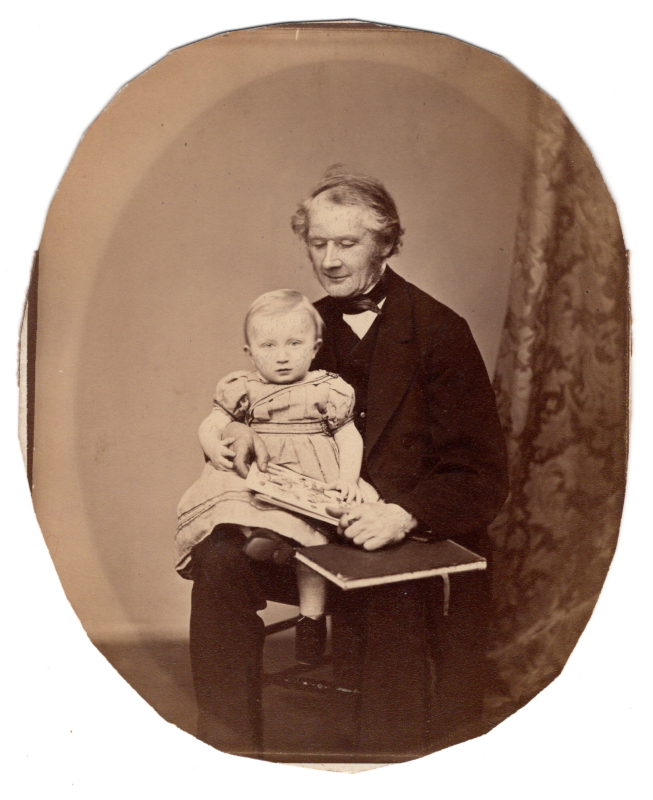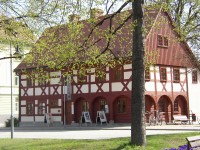Das Foto zeigt den Direktor der Maschinenfabrik Johannes Ehregott Christoph (*27.8.1810 Christiansfeld – 22.4.1887 Niesky). Auf seinem Schoß sitzt die ca. zweijährige Tochter Sara (1850-1908).
Das Foto wurde etwas unsauber beschnitten, so dass es in einen ovalen Fotorahmen passt.Die Aufnahme entstand um 1852 (Schlussfolgerung aus dem Alter des Kindes) in einem Fotoatelier. Die Fotorückseite wurde mit Bleistift beschriftet: „Urgroßvater Christoph mit Tochter Sara“.
Sara heiratete später Johannes Nischwitz (1840-1914, Kaufmännischer Leiter in der Maschinenfabrik J. E. Christoph). Enkeltochter Sara Drexler (1872-1945) schildert in ihrem Lebenslauf (191/18) sehr eindrucksvoll ihre Erinnerungen an den Urgroßvater.
en

